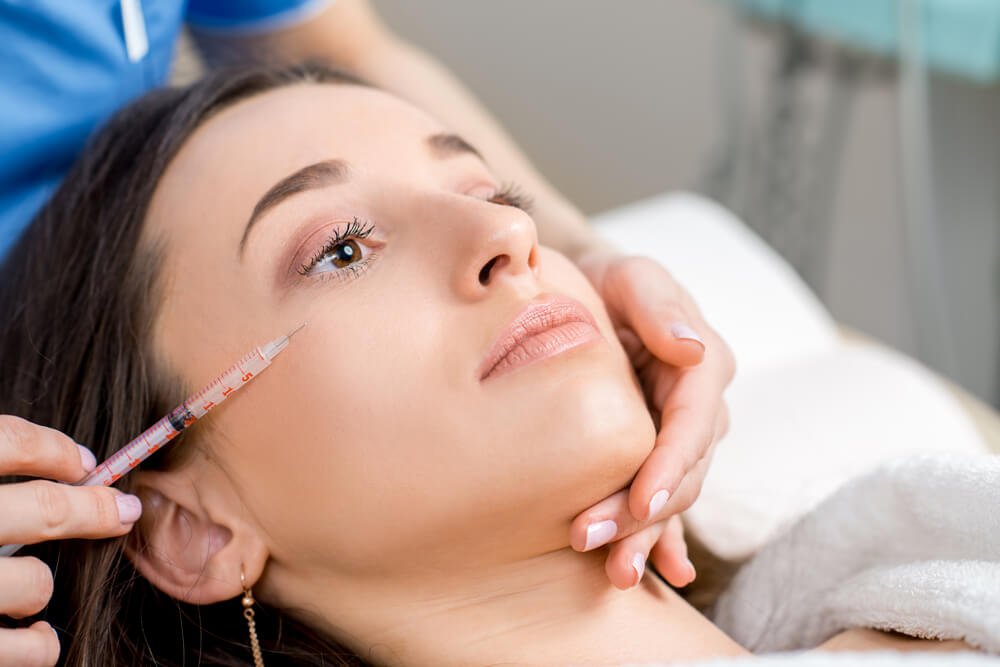Botox injections in Dubai (حقن البوتوكس في دبي) have become one of the most popular non-surgical cosmetic treatments for reducing wrinkles and rejuvenating the facial appearance. While generally safe, some individuals worry about potential side effects, including drooping eyelids, also known as ptosis. Understanding how this can happen, the likelihood, and steps to minimize the risk is important for anyone considering Botox treatment.

What Causes Drooping Eyelids After Botox?
Drooping eyelids occur when Botox spreads from the injection site to nearby muscles responsible for lifting the eyelid. This usually happens due to:
- Incorrect injection placement: If the product is injected too close to the upper eyelid.
- Excessive dosage: Using more units than necessary in certain areas.
- Individual anatomical differences: Each person’s muscle structure varies, affecting how Botox diffuses.
The result is a temporary inability of the eyelid to lift fully, causing a drooped appearance. This condition is generally not permanent and resolves as the effect of Botox wears off, typically within 3–6 weeks.
How Common is Eyelid Drooping?
Eyelid drooping is relatively rare. Studies and cosmetic treatment reports indicate that the risk is typically under 5% when injections are performed properly. The risk increases slightly with treatments targeting the forehead or glabellar area (between the eyebrows). Patients who are aware of this potential side effect and discuss concerns before treatment can significantly reduce the likelihood of occurrence.
Prevention Strategies:
Choose Experienced Practitioners:
While this article does not reference specific clinics, it is important to seek practitioners with extensive experience in Botox injections in Dubai. Proper technique and knowledge of facial anatomy significantly reduce the risk of side effects.
Correct Dosage and Placement:
- Avoid excessive units in sensitive areas near the eyelids.
- Follow guidelines for injection depth and spacing.
- Use conservative initial doses, increasing gradually if necessary.
Post-Treatment Precautions:
- Remain upright for at least 4 hours after the procedure.
- Avoid rubbing or massaging the treated area.
- Avoid strenuous exercise immediately after injections, as increased blood flow may encourage product migration.
Symptoms of Eyelid Drooping:
Signs of drooping eyelids may appear within 2–5 days post-treatment and include:
- Visible lowering of one or both upper eyelids.
- Mild heaviness in the affected eye.
- A slight asymmetry between the two eyes.
It is usually painless and often improves naturally as the Botox effect diminishes.
Managing Drooping Eyelids:
If ptosis occurs, there are strategies to manage the condition while waiting for it to resolve:
- Temporary eye drops: Certain prescription drops can help lift the eyelid slightly.
- Camouflage techniques: Makeup or eyelid tape can mask mild drooping.
- Patience: Most cases improve fully within a few weeks.
Importantly, drooping from Botox is temporary and does not cause permanent damage to eye function.
Comparing Botox Risks to Other Cosmetic Treatments:
Unlike dermal fillers, which primarily address volume loss and wrinkles, Botox directly relaxes muscles. The targeted muscle relaxation can inadvertently affect nearby muscles, leading to side effects like eyelid drooping. Dermal fillers carry different risks, such as swelling, bruising, or lump formation, but generally do not cause ptosis.
Frequently Asked Questions:
How long does drooping eyelid last after Botox?
Typically, 3–6 weeks, depending on individual response and metabolism of the product.
Can it be corrected quickly?
Temporary measures like prescription eye drops may help, but full recovery usually requires waiting for the Botox to wear off.
Is drooping eyelid permanent?
No, Botox-induced ptosis is temporary and reverses as the effect diminishes.
How can I minimize risk?
Seek experienced practitioners, avoid over-injection, and follow post-treatment care instructions carefully.
Are there areas where Botox is safer for eyelid concerns?
Areas farther from the eyelids, such as the lateral forehead or outer crow’s feet, carry a lower risk compared to glabellar lines.
Conclusion:
While Botox injections (حقن البوتوكس) are generally safe and effective for reducing facial wrinkles, there is a small risk of drooping eyelids. This temporary side effect is often preventable with proper injection techniques, correct dosing, and post-treatment care. Understanding the signs and knowing how to manage them can help patients feel more confident and informed before undergoing treatment. When approached with caution and expertise, Botox offers a reliable and minimally invasive option for facial rejuvenation with a low likelihood of complications.




Comments